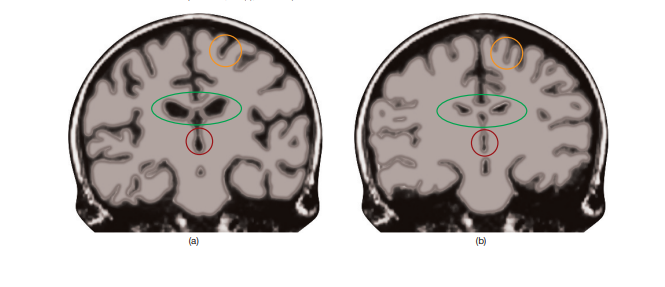People with eating disorders are characterized by unusual food intake behaviors. These individuals who suffer from eating disorders are at risk of dying, especially those who get diagnosed with anorexia nervosa (AN). The biological basis of existence of AN includes long-term determinants of Deoxyribonucleic acid that cause the body to lose weight but the patient overlooks the same. Anorexia is influenced by brain changes and genes, which comprise the biological basis of evidence regarding this eating disorder. People with anorexia nervosa are not highly interested in food and may be sensitive to the amount they take and the weight that may be gained. In terms of brain changes, anorexia is associated with the absence of gray and white substances in the brain where sulci enlarge for a person with the disorder, as shown in Figure 1 below (Carlson & Birkett, 2021). The brain tissue shrinks and catalyzes a person to ignore the impending dangers of their lifestyle when it comes to eating. In a healthy person who does not have the disorder, the tissue structures in the brain are normal, as shown in part B.

The other biological evidence is genetic factors that may influence anorexia nervosa. Between 58-76% of the variability in the diagnosis for anorexia is controlled by genes (Carlson & Birkett, 2021). For instance, children will inherit tissue formations in the brain from their parents, which may be easily affected by shrinking anorexia nervosa from their parents. (Schlegl et al., 2020). Genetic factors contribute to anorexia’s etiology due to the molecular approaches that are characterized by deterioration of physical health. The serotonin pathway receptors are essential in controlling molecular substrates that facilitate the physiology of food intake. Other crucial elements that are genetic include dopamine peptides that regulate energy intake and how it is consumed in the body (Schlegl et al., 2020). In this case, a person with genes that are receptive to dopamine-containing neurons may have this eating disorder. This disorder needs to be contained by utilizing cognitive behavioral therapy and pharmacological medications.
References
Carlson, N. R., & Birkett, M. A. (2021). Ingestive behavior. In Foundations of behavioral neuroscience (10th ed., pp. 299–300). Pearson.
Schlegl, S., Maier, J., Meule, A., & Voderholzer, U. (2020). Eating disorders in times of the COVID‐19 pandemic—Results from an online survey of patients with anorexia nervosa. International Journal of Eating Disorders, 53(11), 179-180. Web.